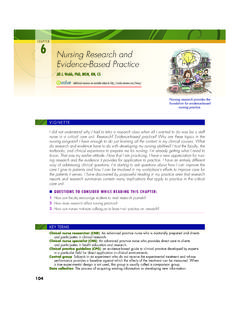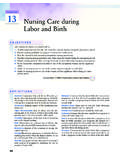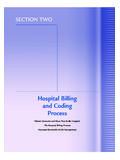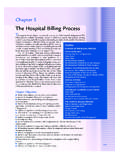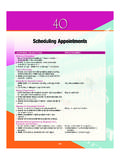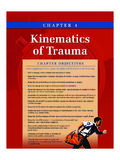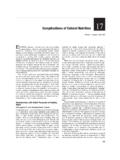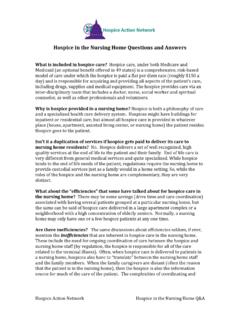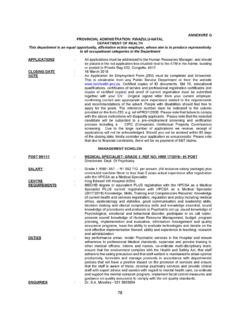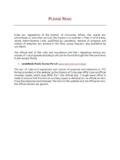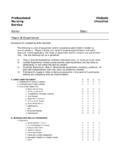Transcription of Nursing Care of the Family during Pregnancy
1 QCh a p t e r 7 Nursing Care of the Family during PregnancyDEITRA LEONARD LOWDERMILKLEARNING OBJECTIVES Describe the process of confirming Pregnancy and estimating the date of birth. Summarize the physical, psychosocial, and behavioral changes that usually occur as the mother and other Family members adapt to Pregnancy . Discuss the benefits of prenatal care and problems of accessibility for some women. Outline the patterns of health care used to assess maternal and fetal health status at the initial and follow-up visits during Pregnancy . Identify the typical Nursing assessments, diagnoses, interventions, and methods of evaluation in providing care for the pregnant woman. Discuss education needed by pregnant women to understand physical discomforts related to Pregnancy and to recognize signs and symptoms of potential complications.
2 Examine the impact of culture, age, parity, and number of fetuses on the response of the Family to the Pregnancy and on the prenatal care TERMS AND DEFINITIONS birth plan A tool by which parents can explore their childbirth options and choose those that are most important to themcouvade syndrome The phenomenon of expectant fathers experiencing Pregnancy -like symptomscultural prescriptions Practices that are expected or acceptablecultural proscriptions Forbidden; taboo practicesdoula Trained assistant hired to give the woman support during Pregnancy , labor and birth, and postpartumhome birth Planned birth of the child at home, usually performed under the supervision of a midwifemorning sickness Nausea and vomiting that affect some women during the first few months of their Pregnancy ; may occur at any time of daymultifetal Pregnancy Pregnancy in which more than one fetus is in the uterus at the same time.
3 Multiple gestationN gele s rule One method for calculating the estimated date of birth, or due date pelvic tilt (rock) Exercise used to help relieve low back discomfort during menstruation and pregnancypinch test Determines whether nipples are everted or inverted by placing thumb and forefinger on areola and pressing inward; the nipple will stand erect or will invertsupine hypotension Drop in blood pressure caused by impaired venous return when the gravid uterus presses on the ascending vena cava, when woman is lying flat on her back; vena cava syndrometrimesters One of three periods of approximately 3 months each into which Pregnancy is 19010/7/2009 4:34:59 PMQ Ch a p t e r 7 Nursing Care of the Family during Pregnancy 191 The prenatal period is a time of physical and psychologic preparation for birth and parent-hood.
4 Becoming a parent is one of the mile-stones of adult life, and as such, it is a time of intense learning for both parents and those close to them. The prenatal period provides a unique opportunity for nurses and other members of the health care team to influence Family health. during this period, essentially healthy women seek regular care and guidance. The nurse s health-promotion interven-tions can affect the well-being of the woman, her unborn child, and the rest of her Family for many prenatal visits, ideally beginning soon after the first missed menstrual period, offer opportunities to ensure the health of the expectant mother and her fetus. Prenatal health care permits diagnosis and treatment of preexisting maternal disorders and any disorder that may develop during the Pregnancy .
5 Prenatal care is designed to monitor the growth and development of the fetus and to identify any abnormalities that will interfere with the course of normal labor. Prenatal care also provides education and support for self-management and spans 9 months, but health care providers do not use the familiar monthly calendar to determine fetal age or discuss the Pregnancy . Instead, they use lunar months, which last 28 days, or 4 weeks. According to the lunar calendar, normal Pregnancy lasts approximately 10 lunar months, which is the same as 40 weeks or 280 days. Health care providers also refer to early, middle, and late Pregnancy as trimesters. The first trimester lasts from weeks 1 through 13; the second, from weeks 14 through 26; and the third, from weeks 27 through 40.
6 A Pregnancy is considered at term if it advances to the completion of 37 focus of this chapter is on meeting the health needs of the expectant Family over the course of Pregnancy , or the prenatal OF Pregnancy Women may suspect Pregnancy when they miss a men-strual period. Many women come to the first prenatal visit after a positive home Pregnancy test; however, the clinical diagnosis of Pregnancy before the second missed period is difficult in some women. Physical variations, obesity, or tumors, for example, may confuse even the experienced examiner. Accuracy is important, however, because emo-tional, social, medical, or legal consequences of an inac-curate diagnosis, either positive or negative, can be extremely serious.
7 A correct date for the last (normal) men-strual period (LMP or LNMP) and for the date of inter-course and a basal body temperature (BBT) record are of great value in the accurate diagnosis of Pregnancy (see Chapter 4).Signs and SymptomsGreat variability is possible in the subjective and objective signs and symptoms of Pregnancy ; therefore the diagnosis of Pregnancy is often uncertain for a time. Many of the indicators of Pregnancy are clinically useful in the diagno-sis of Pregnancy . They are classified as presumptive, prob-able, or positive (see Table 6-2).The presumptive indicators of Pregnancy can be caused by conditions other than gestation. For example, illness or excessive exercise can cause amenorrhea, anemia or infection can be the cause of fatigue, a tumor may cause enlargement of the abdomen, and a gastrointestinal (GI) upset or food allergy may cause nausea or vomiting.
8 Therefore these signs alone are not reliable for Date of BirthAfter the diagnosis of Pregnancy , the woman s first ques-tion usually concerns when she will give birth. This date has traditionally been termed the estimated date of confine-ment (EDC), although estimated date of delivery (EDD) is also used. However, the term estimated date of birth (EDB) pro-motes a more positive perception of both Pregnancy and birth. Because the precise date of conception is generally unknown, several formulas can be used for calculating the EDB. None of these guides is infallible, but N gele s rule is reasonably accurate and is usually used (Johnson, Gregory, & Niebyl, 2007).WEB RESOURCESA dditional related content can be found on the companion website at NCLEX Review Questions Assessment Videos: Chest wall, breast, abdomen/fundal height, fetal heart rate Case Study: First Trimester Case Study: Second Trimester Case Study: Third Trimester Critical Thinking Exercise: Discomforts of Pregnancy Critical Thinking Exercise: Teenage Pregnancy Nursing Care Plan: Adolescent Pregnancy Nursing Care Plan: Discomforts of Pregnancy and Warning Signs Spanish Guidelines: Assessment of Respiratory Symptoms Spanish Guidelines: Prenatal Interview Spanish Guidelines: Prenatal Physical 19110/7/2009 4:34.
9 59 PMQ192 Un i t tw o PREGNANC ychanges in readiness for parenthood as she prepares for her new role. She moves gradually from being self-con-tained and independent to being committed to a lifelong concern for another human being. This growth requires mastery of certain developmental tasks: accepting the preg-nancy, identifying with the role of mother, reordering the relationships between herself and her mother and between herself and her partner, establishing a relationship with the unborn child, and preparing for the birth experience (Lederman, 1996). The partner s emotional support is an important factor in the successful accomplishment of these developmental tasks.
10 Single women with limited support may have difficulty making this the PregnancyThe first step in adapting to the maternal role is accept-ing the idea of Pregnancy and assimilating the pregnant state into the woman s way of life. Mercer (1995) described this process as cognitive restructuring and credited Reva Rubin (1984) as the nurse theorist who pioneered our understanding of maternal role attainment. The degree of acceptance is reflected in the woman s emotional responses. Many women are upset initially at finding themselves preg-nant, especially if the Pregnancy is unintended. Eventual acceptance of Pregnancy parallels the growing acceptance of the reality of a child. However, do not equate nonac-ceptance of the Pregnancy with rejection of the child; a woman may dislike being pregnant but feel love for the unborn who are happy and pleased about their preg-nancy often view it as biologic fulfillment and part of their life plan.
